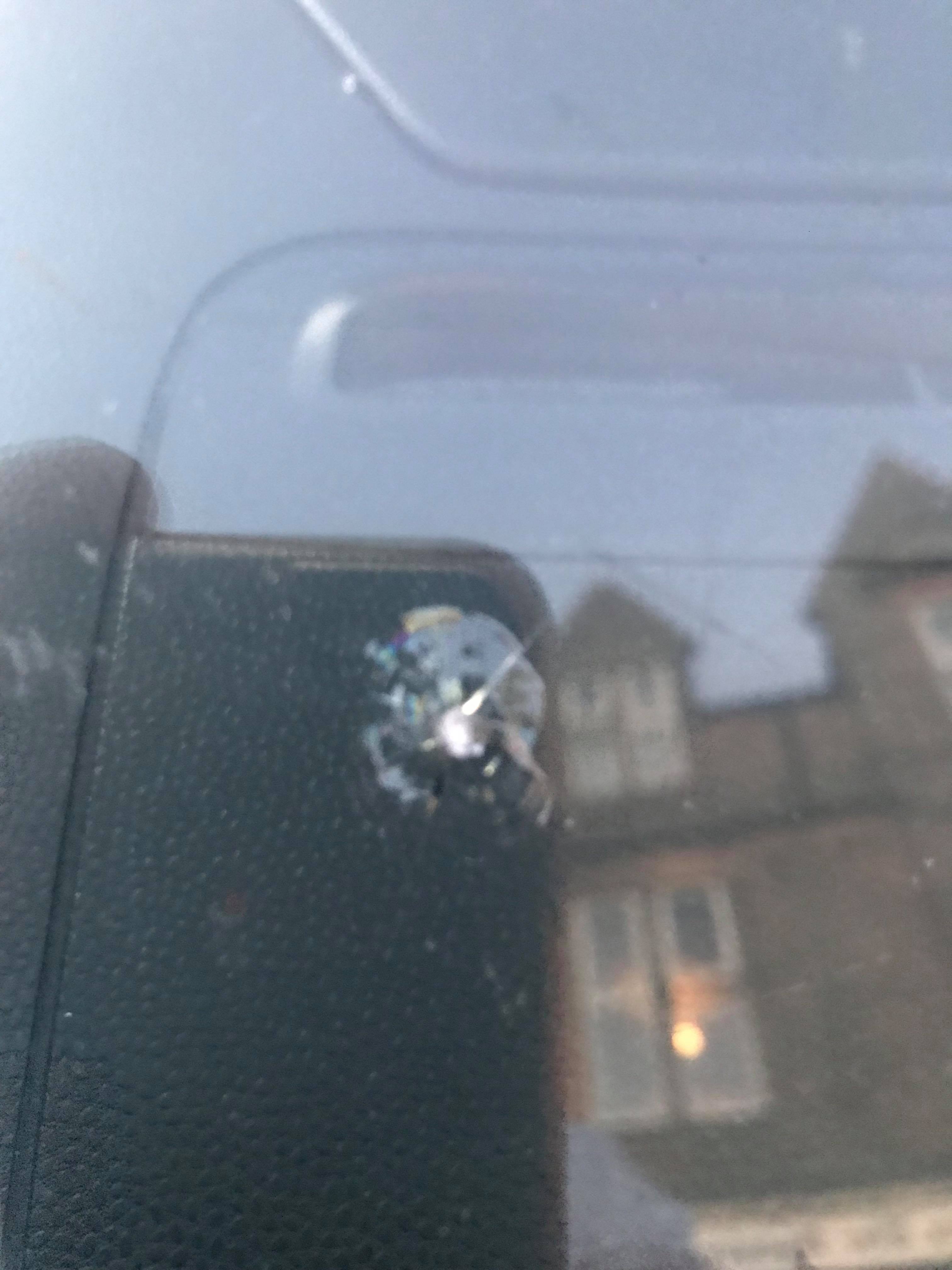CASH-strapped councils have been accused of creating “death traps” for drivers by laying loose gravel over potholes.
Rather than permanently fix potholes, some councils have been “surface dressing” roads by laying gravel on tar.
But several motorists have complained that the gravel is flying about like shrapnel, causing serious damage to their vehicles.
And some claim the layer of loose gravel is so thick it is causing them to skid.
Furious biker, William Pitt, shared a video of his shoes, surrounded by inches of loose gravel on a newly-surfaced road in Buckie, Moray last week.
While posting the clip to Facebook, he wrote: “F****** Moray murder Council. Far too many roads being left like this, Negligence and disregard for Safety.”
The post was inundated with comments from dozens of other motorists who claimed to have had their windscreens cracked from the loose stones from the roads.
Bart Black wrote: “They are a bunch of f****** road vandal c***s. Just saying.”
Allan Findlay said “I’ve got a mate that’s had the whole front and side of his 5 month old Golf R nailed with chippings and another whose jeep window has stone chips all over it because of the surface dressing between Rothes and Fogwatt.”
Liam Mulgrew wrote: “The problem is that it’s outright dangerous even when taken at 20mph on a bike. I personally have come across stretches of road like this where the signage is literally at the point where the road turns to gravel. Its unacceptable.
“Last year I was down the back roads of Edinburgh test riding a bike and came across this stuff and there was a car in a field on its roof because of this stuff.”

Oliver Oakley said: “This is in the middle of motorcycle tourist season too, many coming from abroad who don’t have this death trap road surface. Let alone the lack of slippery surface signs. It’s an accident waiting to happen.”
After being tagged in the post, Moray Council apologised and said they would contact their road team over the weekend to get the roads swept “asap”.
Social media users weighed into the post saying the technique has been getting used right across Scotland.
Kenny Winston said: “Aberdeenshire c***cil has done it too nearly came off this morning.”
Dave Lyall wrote: “They are getting worse, we left Knockando last week and the amount of lose chips was mental.
“Then we came down over Glenshee where they had recovered the road a few months ago and it was lovely, like a race track nice and smooth. And now …… they have covered it with chips, 3” thick.
“We were fully loaded with luggage, how know one dropped there bike I’ll never know. B******s.”
And Mike Hallsworth wrote: “Plenty of roads around south east borders like this no signage not being swept.”
Motorcycle Law Scotland said: “Various Councils are conducting road repairs using surface dressing techniques.
“There are clear guidelines re sweeping and signage within their code of best practice which are not being adhered to. Be vigilant out there especially in #Morayshire and #Aberdeenshire.”
They later added: “Unfortunately all councils appear to be deploying this technique to repair roads as it is recognised as being one of the cheapest.”
Earlier this year it was reported that last winter, drivers complained every three minutes about potholes on Scottish roads.
A Freedom of Information request revealed that 53,531 complaints – or 442 per day – were logged in Scotland.
‘Surface Dressing’ is a treatment that has been used for years to protect the carriageway surface, sealing it from the ingress of water.
It is meant to enhance skid resistance and extend the life of the carriageway
surface by up to ten years.
The process entails spraying the road with a tarred surface and covering it with stone chippings.
The ‘dressing’ is then rolled, which together with the actions of slow moving traffic, embeds the stone chips into the surface.
It is regarded as the most cost-effective way of fixing road surfaces.